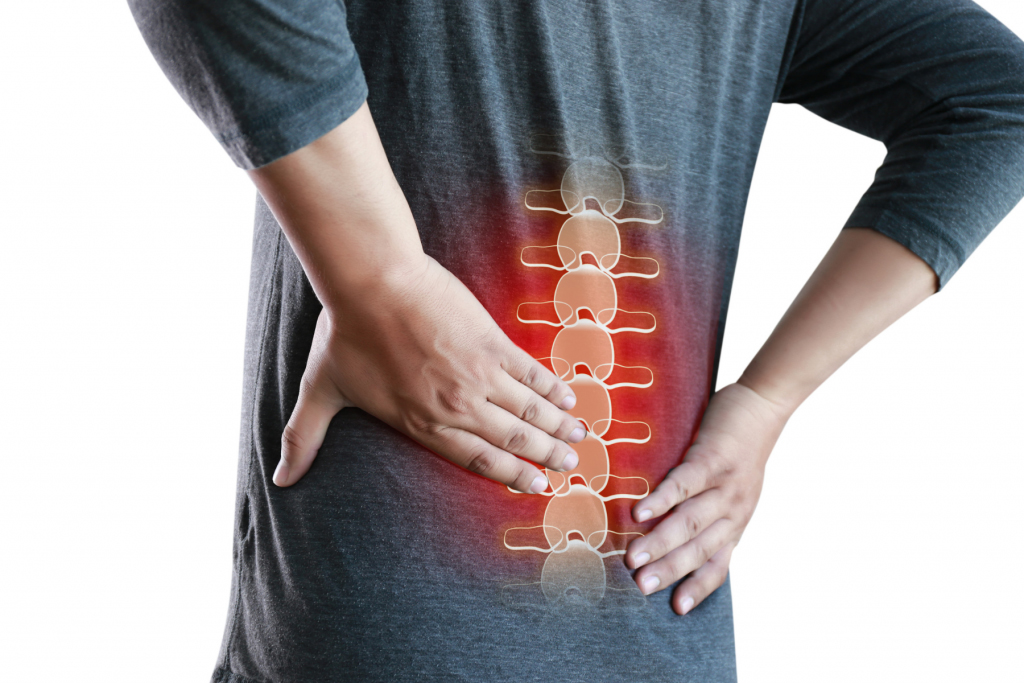The stresses of golf are not just in your head
When you play a game of golf, it is not just mental stress that can take a toll on you, but physical stress, too. Take a deep dive into how playing golf can affect your lower back and lead to overuse injuries, detracting from performance and health.

For the recreational golfer, a day of golf on the course can mean a day of fun and relaxation. It can also mean a day of club throws, swearing and more frustration than a day of work. The mental game within golf is one that even professional golfers struggle with. We are often left wondering how we can look like Tiger Woods on one shot, only to chunk the very next shot 10 yards into the creek in front of us. However, mental stress is not the only kind of stress that a round of golf puts us under. A round of 9- or 18-holes can also put the golfer through mechanical stress on joints and soft tissues.
Common overuse injuries in golf
Overuse injuries make up most of golf-related injuries, according to a study in the Sports Medicine and Health Science Journal. The most common sources of pain from overuse golf injuries include: the wrist, elbow, hips and the lower back. Because the golf swing is an asymmetric motion, it contributes to muscular imbalances. These imbalances can often cause of low back pain (LBP). For the amateur golfer, poor technique and swing faults will increase the likelihood of developing a golf-related injury. Additionally, poor mobility further increases the risk of injury, further compounding the musculoskeletal stress golf places on the body. MyTPI provides an interactive, in-depth analysis of common swing mechanics that can lead to inefficiency and higher risk of injury.
Cumulative load theory
According to the cumulative load theory, repeated loading with high force increases the overall stress experience by the system. This in turn causes damage to musculoskeletal tissue over time. One segment that often causes pain is the right side L4-L5 segment (for right-handed golfers it would be left side for left-handed athletes). This can be contributed to several factors, including the ground reaction force produced during the golf swing and the combined lateral side-bending and rotation at follow-through in the “modern golf swing.” Researches have found that ground reaction forces (GRF) can equal 6.5-8 times your body weight immediately after impact. The resultant force of this muscle activity leads to increased compressive forces at the lumbar vertebrae. A combination of GRF and paraspinal muscle activity can cause compressive and lateral shear forces that are 25-75% higher in golfers with low back pain.
The stress a golf swing places on the body
With the game of golf always changing, there is more focus on hitting the ball harder and further. To do so, a golfer must achieve a greater club head speed that is both controlled and repeatable. This requires a controlled and sequences golf swing. In other words, the appropriate muscles must fire and sequence throughout the four phases of the swing: address, backswing, downswing and follow-through. During these phases, a golfer transfers energy from their larger, power-generating muscles to the distal extremities, such as the hands and feet. They must perform this transfer sequentially, with a proper timing and muscle firing pattern, to ensure improved performance and decreased risk of injury.
Other causes of lower back pain in golfers
There are several factors that can contributed to the development of LBP in golfers. This includes early lumbar extension muscle activation, increased or decreased lumbar spine flexion at address and poor hip rotation mobility and strength. Early lumbar extension activation can lead to an increase in spinal compressive forces, as well as many mishits and swings faults, such as slicing and topping the ball. An altered lumbar spine position at address or ball strike will also lead to an altered movement pattern of the pelvis. This prohibits adequate muscle force transfer and lead to further injuries. To prevent this, the golfer should have the ideal trunk flexion angle (45 degrees of forward flexion) throughout the golf swing. Any limitations to this position can contribute to increased injury risk and poor sport performance.
Hip rotation strength and range of motion (ROM) is another key component of a golf swing. Lead leg internal ROM can decrease compared to trail leg hip mobility due to the overload of eccentric muscle activity during the backswing. As the lead leg becomes a focal point of stability for a follow through, the pelvis rotates from a clockwise to counterclockwise position to generate force through the swing.
Thinking ahead to maximize performance
The golf swing is an asymmetrical movement pattern that places abnormal stresses on the muscles, tendons and structures of the lower back and other areas of the body. Changes in technology continue to advance the game of golf, and athletes who can hit the ball farther and longer often succeed. In order to achieve these distances, golfers must have proper mobility, sequencing and muscle stabilization to reduce the amount of force and stress put on the body.
With an improved understanding of the sequencing and connection between different body regions, a golfer will be able to both improve their performance and maintain adequate joint health and preservation for years to come. Combine that with taking care of mental stress during the game, that golfer will be closer than ever to optimal performance — and Optimal Health.
RECENT POSTS
CATEGORIES

> Privacy Practices
> Terms and Conditions
Copyright © Performance 2022.
All rights reserved.
JOIN OUR COMMUNITY
Sign up for our mailing list to learn more about Performance, stay up-to-date on our offerings, and receive our newsletter.
Digital Marketing by Rebel Interactive Group
